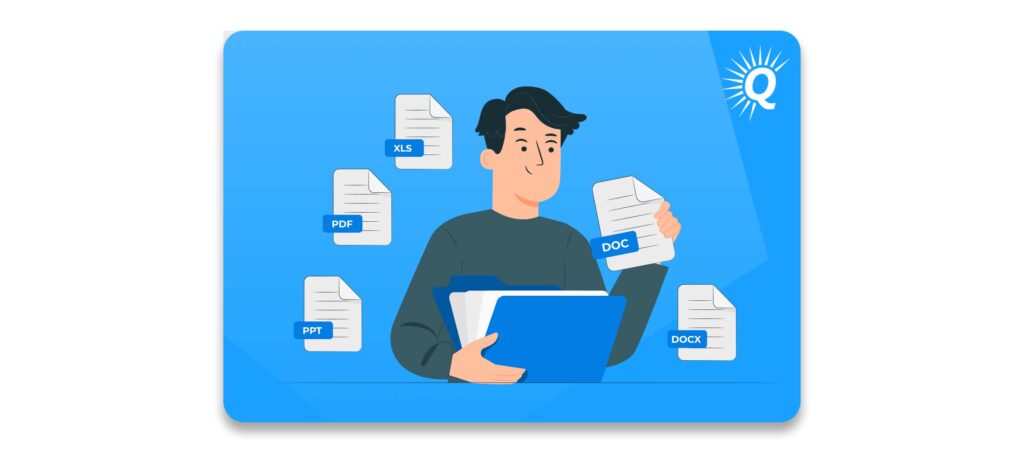Topics:
Never Miss a Beat - Get Updates Direct to Your Inbox
FILTER:


5 Key Steps to Successfully Transfer Ownership of Your SaaS Business
By Quiet Light
Before going to market, it’s essential that you understand how to transfer ownership of your SaaS business. When you know what to expect before listing your business for sale, the due diligence process is easier, there are fewer headaches along the way, and there’s less room for the deal to go awry.
In this article, we discuss:
- The key elements of transferring SaaS business ownership
- The difference between an asset sale and a stock sale when transferring your SaaS business
- How to transfer ownership in a SaaS acquisition and ensure a smooth tra
- Why hiring a business Advisor can help you experience a smoother transition
Related Articles:
Avoid These Six Common Mistakes When Selling Your SaaS Business
Eight Key Factors to Consider to Maximize The Value of Your SaaS Business


3 Key Elements of Transferring SaaS Business Ownership
If you are thinking about selling your SaaS company, you may be wondering, “What are the key elements for transferring ownership of my Saas business?” Having an understanding of the steps involved in transferring ownership will help you be better prepared for the process when it arrives.
Transferring business ownership encompasses several steps, including:
- Buyer and seller sign an asset purchase agreement
- Buyer deposits funds into an escrow account
- Seller transfers business assets
- Funds are released to the seller
- Post-sale training period
1. Buyer and seller sign an asset purchase agreement
During an asset sale (more on this in the next section), the buyer and seller sign an asset purchase agreement, or APA. The asset purchase agreement is a legally binding document that spells out the terms and conditions of the transaction in detail.
The asset purchase agreement includes the sale price and payment terms agreed upon by the buyer and seller. It also contains all assets to be transferred to the buyer. These may include:
- Websites
- Domain names
- Intellectual property rights
- Email lists
- Patents
- Software products
- Business name
- Trademarks
- Ad accounts
- Business documentation and records
- Social media accounts
- Software accounts
The asset purchase agreement also spells out all other agreements related to the sale of the business, including post-sale training terms.
If disputes arise between you and the buyer after the sale, the asset purchase agreement is used as the master document to guide dispute resolution. Given its importance in the transaction process, it is crucial to ensure it is drafted in an appropriate manner.
Having your business Advisor or other legal advisors involved in the creation and approval of the APA can help to ensure its integrity.


2. Buyer deposits funds into an escrow account
Both the buyer and the seller have an interest in ensuring the security of the transaction. To build trust and address potential vulnerabilities, it is customary to use an escrow agent. If you have ever bought or sold real estate you are likely familiar with how this works.
Once both parties have signed the APA and hired an escrow agent, the buyer places the agreed-upon funds into the escrow account. At this point, the seller cannot access or release the funds until they have upheld their side of the transaction agreement. As a result, the buyer is assured their funds are safe until they secure ownership of the business.
“If disputes arise between you and the buyer after the sale, the asset purchase agreement is used as the master document to guide dispute resolution.”
3. Seller transfers business assets
Once the funds are confirmed to be in the escrow account, the seller transfers all assets covered in the APA to the buyer. For assets such as social media accounts, websites, and software accounts, this process is usually quite straightforward.
For other assets, such as supplier relationships, the process can be a bit more complicated. Your business Advisor or other legal assistance will help you complete this process in a timely manner.


4. Funds are released to the seller
Once the buyer confirms they have received ownership of all assets, the escrow agent releases the funds to the seller. Again, the escrow agent instills trust in the process by ensuring the seller will receive their funds once they have transferred all assets.
5. Post-sale training period
The process is not yet complete. Most agreements include a period of post-sale training once the buyer has taken over ownership of the company.
During the training period, you train the new business owner on how to successfully operate and manage the business. This may include teaching them how to:
- Implement the company’s content marketing strategy
- Manage the sales team to optimize SaaS sales
- Manage customer acquisition, customer churn, and customer lifetime value
- Optimize customer success
- Manage the SaaS product(s)
- Monitor and optimize financial metrics like cash flow, annual recurring revenue, monthly recurring revenue, and revenue growth
- Protect privacy and personal information
The training period is a crucial stage for both the buyer and seller. For the buyer, it is their opportunity to get up to speed so that once you step away, they can run the business on their own. For you as the seller, helping the buyer succeed will mitigate potential problems or disagreements that arise down the road. When the new owner succeeds, you succeed.
The exact terms of the training period vary from deal to deal and depend on the outcome of your negotiations with the buyer. For example, you could agree to provide 15 hours of training per week for the first month and then reserve availability to answer questions by email for another three months. The more complex the business, the longer the training period may be.
“Most agreements include a period of post-sale training once the buyer has taken over ownership of the company.”
Get a free, individually-tailored valuation and business-readiness assessment. Sell when you're ready. Not a minute before.Thinking of Selling Your Business?
Asset Sale vs Stock Sale When Transferring Your SaaS Business
There are two different paths when it comes to transferring ownership of your SaaS business. You can elect to engage in an asset sale or you can choose a stock sale. Below, we highlight some of the similarities and differences between these two options.
Asset sale
If you run a small business or medium-sized business, it is likely that you will take part in an asset sale. In an asset sale, you transfer only certain business assets to the buyer. The exact assets to be transferred depend on the outcome of negotiations between you and the buyer.
With an asset sale, you have the option of excluding certain business assets from the sale if you wish. For example, if you run your SaaS business from your personal computer, you and the buyer may agree to leave your computer out of the transaction.
Under an asset sale, the business entity is typically not transferred. When the sale is concluded, you can dissolve the official business entity. In this case, the buyer creates a new entity and assigns all transferred assets to it.
Because the entity does not transfer ownership, the buyer does not take on all liabilities or debts associated with it. These liabilities remain your responsibility.
As the seller, you may face double taxation from an asset sale. Specifically, you may be required to pay capital gains taxes on appreciated assets as well as personal taxes on the proceeds from the sale of the business.
“If you run a small business or medium-sized business, it is likely that you will take part in an asset sale.”


Stock sale
With a stock sale, the buyer purchases the entirety of the business. This includes the legal entity, all assets and liabilities of the business, and vendor relationships (such as with your payment facilitator).
A stock sale may enable you to avoid certain taxes and minimize your overall tax liability from the sale. However, the buyer must agree to take on all liabilities and debts. As a result, some buyers may prefer to avoid a stock sale.
Whether you choose a stock sale or an asset sale will depend on the specifics of the situation as well as the outcome of negotiations between you and the buyer.
“A stock sale may enable you to avoid certain taxes and minimize your overall tax liability from the sale.”
How to Transfer Ownership Smoothly in a SaaS Acquisition
Selling a business and transferring ownership is a complex process involving high stakes that can easily become a stressful experience for both the buyer and seller. With so many aspects to manage, the process can encounter any number of roadblocks or sticking points.
Given this, the way in which you prepare and execute the transaction process has a large impact on its overall success. There are several things you can do to create a smooth transfer of ownership, including:
- Preparing your documentation
- Creating standard operating procedures
- Communicating effectively
- Thoroughly completing all post-sale training


Prepare your documentation
A smooth transfer process starts with adequate preparation. As the seller, you can increase the chances of creating a successful transaction by preparing all relevant documentation ahead of time.
The more complex or disorganized your business is, the harder it will be for a new owner to successfully take over ownership of your business. In addition, incomplete or disorganized documentation makes it more difficult for a prospective buyer to verify the details of your business during due diligence. This slows down the transaction process and creates more work for everyone involved.
Before you sell your business, take some time to adequately prepare your business documentation. This includes creating or optimizing your accounting records, supplier relationships, and other pertinent information.
By doing so, you work to reduce potential sticking points during the transaction process. You also make it much easier for the new owner to successfully run the business after they have taken over.
Lastly, it is a good idea to work with an attorney when creating the asset purchase agreement and other legal documentation involved in the transaction process. This helps to create confidence in the validity of the legal agreements and facilitates a smooth transfer of assets.
“As the seller, you can increase the chances of creating a successful transaction by preparing all relevant documentation ahead of time.”
Create standard operating procedures
In addition to creating documentation regarding the performance of your business, it is also helpful to create clear standard operating procedures for the new owner. You can think of these collectively as the operating manual for your business.


Standard operating procedures will help the new owner successfully run the company after you are no longer involved. Even with the post-sale training period, the owner will likely have many ongoing questions regarding the business’s operations.
By helping the new owner be more self-sufficient, you may also reduce the training burden that falls on you. The new owner may be able to answer any questions they have regarding the business by first consulting the standard operating procedures, rather than immediately coming to you.
Communicate effectively
It may sound simple, but communicating effectively with the buyer is crucial to creating a successful transaction process. By communicating effectively, you can work to build trust and rapport, move the process forward, and mitigate potential hiccups before they happen. If problems do arise, you already have a solid foundation from which to constructively take steps to address the issue.
Effective communication includes listening well in order to gain an understanding of the buyer, their concerns, and what they hope to achieve. It also means staying respectful and productive in your communication no matter the situation.
Responding to emails and calls in a timely manner, answering questions thoroughly, and being specific in your words are also important components of effective communication. During talks, negotiate fairly and seek to find outcomes that are beneficial to both parties.
“By communicating effectively, you can work to build trust and rapport, move the process forward, and mitigate potential hiccups before they happen.”
Thoroughly complete all post-sale training
While it has been mentioned before, it is worth stressing the importance of thoroughly completing all agreed-upon post-sale training. In addition to being the right thing to do, by helping the new owner succeed, you also reduce the chances of encountering disputes or issues down the road.


How Hiring a Business Advisor Can Help You Achieve a Smoother Transition
Many entrepreneurs wonder, “Should I use a broker to assist in the transfer of ownership of my Saas business?” The truth is, hiring a qualified business Advisor is often a prudent step when selling your SaaS company.
“Given the importance of getting the exit right, most entrepreneurs find it preferable to work with an Advisor when selling their SaaS business.”
Whether you run a small business or a larger company, your business Advisor will help you with all aspects of the exit. Their role includes:
- Preparing your company for sale
- Finding qualified buyers
- Negotiating favorable terms
- Drafting and signing the APA and other legal documents
- Facilitating the transfer process
Preparing a business for sale and successfully selling it is a complex process. It involves many different stages, each with its own set of challenges. A wealth of knowledge and expertise is involved at each step of the way.
Given the importance of getting the exit right, most entrepreneurs find it preferable to work with an Advisor when selling their SaaS business.
Outsmart the startup game and check out our listings. You can request a summary on any business without any further obligation.Buy a Profitable Online Business





